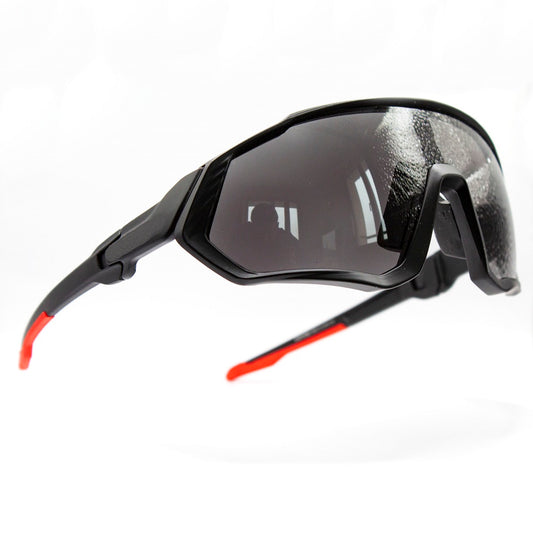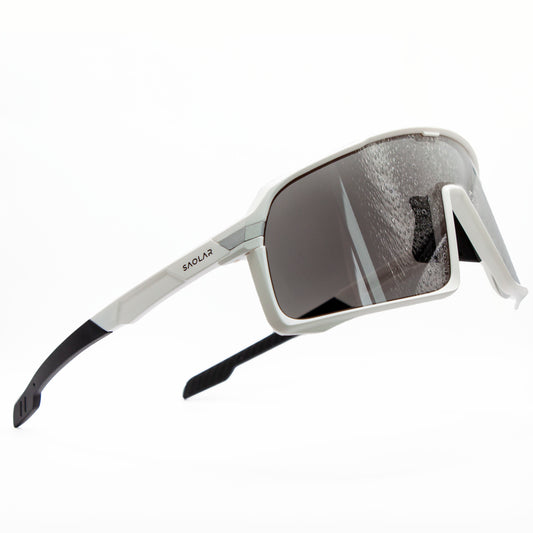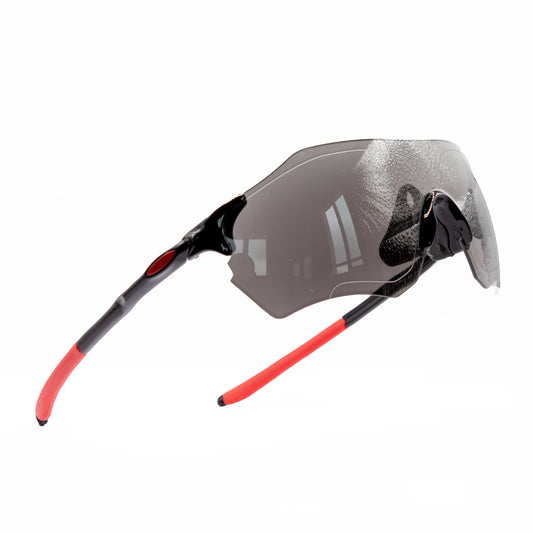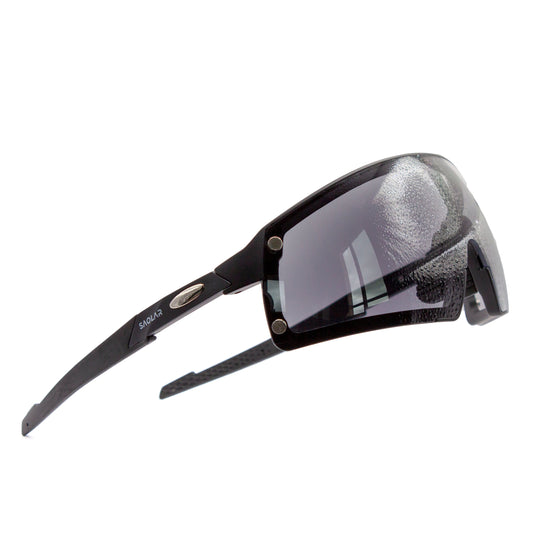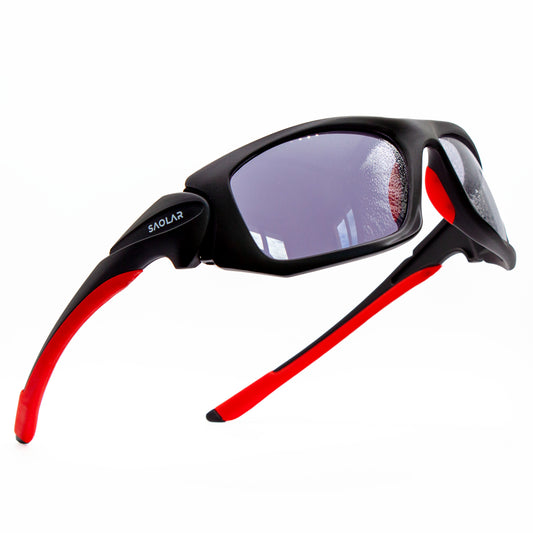1. Introduction to Stretching for Cyclists
Cycling, a symphony of motion and endurance, demands not only strength but also flexibility and balance. In this introduction, we delve into the essential realm of stretches for cyclists, unveiling their pivotal role in elevating your riding experience. From boosting performance to reducing injury risks, the art of stretching holds the secret to a more enjoyable and effective cycling journey. Join us as we explore these benefits, and don't forget to check out more insights in our Essential Guide for Cyclists.
2. Understanding Muscle Function & Balance with Cycling Stretches
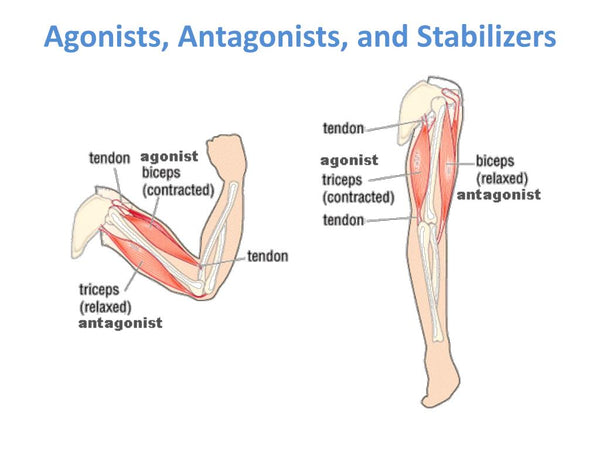
Cycling is more than just pedaling; it's a complex interplay of muscle functions that requires balance and precision. In this section, we unravel the intricate dynamics of muscle roles and how cycling stretches can optimize this balance for a better ride.
- Agonists: These are the primary muscles used while cycling, contracting to create movement.
- Antagonists: The muscles that act in opposition to agonists, playing a crucial role in controlling and smoothing out movements.
- Stabilizers: Often unsung heroes, these muscles keep your joints in place, ensuring fluid and safe movements.
- Assistors: These muscles assist the agonists, contributing to more efficient cycling motion.
Understanding these roles underscores the importance of comprehensive stretching, not just for performance enhancement but also for injury prevention. Balancing these muscle groups through targeted stretches for cycling is crucial in maintaining a harmonious cycling experience.
3. The Immediate Benefits of Stretching Before Bicycling
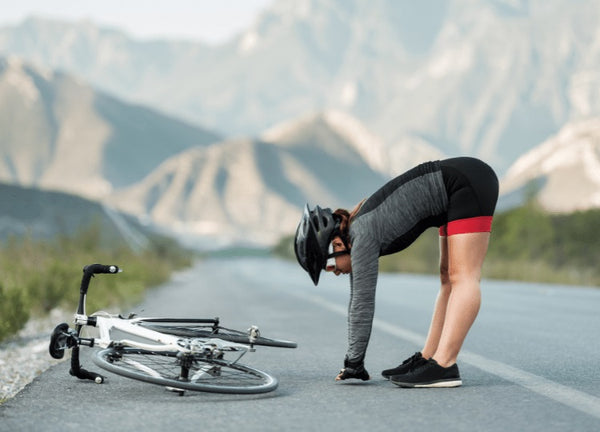
Embarking on a cycling journey begins long before you hit the pedals. The immediate benefits of stretching before cycling and stretches before biking are essential for a smooth start. In this section, we highlight how these stretches contribute significantly to your ride.
- Accelerated Recovery: Stretching boosts recovery by increasing blood flow, thus reducing muscle stiffness and soreness.
- Enhanced Oxygen Flow: It improves blood circulation, leading to better oxygen delivery to the muscles.
- Muscle Prep: Proper stretching readies your muscles for the physical demands of cycling, minimizing the risk of injuries.
Implementing these stretches as part of your pre-cycling routine sets a solid foundation for a fulfilling and less strenuous ride.
4. Long-Term Advantages of Regular Stretching for Bicycling
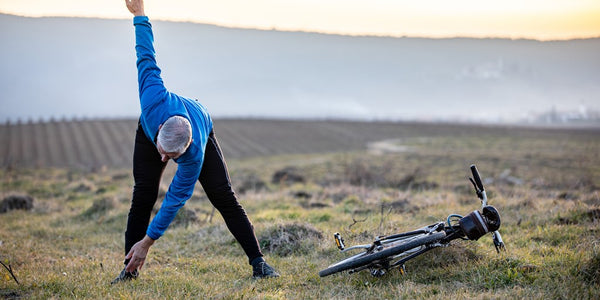
The journey of cycling is a marathon, not a sprint. Regular stretching for bicycling brings long-term benefits that not only enhance your immediate performance but also contribute to your enduring cycling success.
- Preventing Tissue Degradation: Consistent stretching helps maintain muscle elasticity and prevents stiffness.
- Flexibility: A greater range of motion achieved through regular stretching aids in smoother, more efficient cycling movements.
- Injury Prevention: By keeping muscles and joints supple, stretching reduces the likelihood of injuries, ensuring a longer and healthier cycling journey.
Adopting a consistent stretching routine is pivotal for the long-term health and performance of any cyclist.
5. Dynamic vs. Static: Choosing the Right Stretches for Cycling
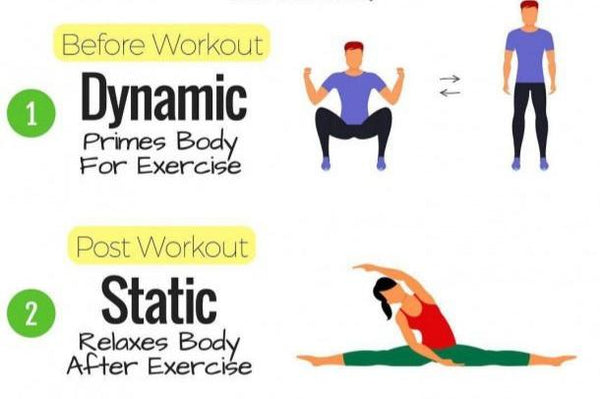
In the world of cycling, stretches are not a one-size-fits-all solution. The choice between dynamic stretches before cycling and static stretches after cycling can greatly impact your performance and recovery.
Dynamic Stretches: The Pre-Ride Energizers
- Dynamic stretches are motion-based, preparing your muscles and joints for the activity ahead.
- Ideal for activating muscles and increasing blood flow.
Static Stretches: The Post-Ride Relaxers
- Static stretches involve holding a position for a period, aiming to relax and lengthen muscles after cycling.
- Best for cooling down and aiding in muscle recovery.
Understanding and applying these types of stretches appropriately can greatly enhance your cycling experience, both in preparation and in recovery phases.
6. The Best Stretches for Cycling Performance
Unlocking Flexibility: Three Point Hamstring - The Essential Stretch
The Three Point Hamstring stretch is a fundamental exercise for cyclists, targeting the hamstrings and lower back. This stretch is performed in three stages to effectively lengthen the hamstring muscles, which are crucial for pedal efficiency and comfort during long rides. Let's break down each step:
- Starting Position: Stand with feet hip-width apart, then hinge at the hips to lower the hands towards the ground, aiming for a gentle stretch in the hamstrings.
- First Variation: Slightly bend the knees, turn the toes outwards, and lower down again to deepen the stretch.
- Second Variation: Adjust by turning the toes inwards, allowing a different part of the hamstring to be targeted.
Regularly performing this stretch can greatly improve flexibility in the lower back and legs, contributing to a more comfortable and efficient cycling experience.
Enhancing Flexibility and Control: Leg Circles with a Strap
Leg Circles with a Strap is another key stretch for cyclists, focusing on the hips and groin areas. This stretch aids in improving the flexibility and rotational mobility of the hip joints, which is vital for efficient pedaling.
- Starting Position: Lie on your back, extending one leg upwards with a strap around the foot.
- Circle Movements: Begin with small circles, gradually increasing the size, promoting flexibility and control in the hip area.
Regular practice of this stretch can lead to greater control and efficiency in cycling movements, contributing significantly to overall cycling performance.
Optimizing Hip Mobility: The Lizard Twist Stretch
The Lizard Twist is a dynamic stretch that targets the hips, groin, and thoracic spine, areas crucial for cycling posture and power. This stretch not only aids in loosening tight hip muscles but also helps in improving upper body mobility, which is essential for maintaining balance and control while cycling.
- The Lizard Twist begins in a low lunge position, focusing on stretching the hips and groin area.
- It then incorporates a twist to engage the thoracic spine, enhancing upper body flexibility.
Incorporating the Lizard Twist into your stretching routine can contribute significantly to improving overall cycling mechanics and comfort.
Promoting Full-Body Flexibility: Child's Pose Twist
The Child's Pose Twist is a gentle yet effective stretch targeting the hips, shoulders, spine, and obliques, offering a comprehensive stretch that benefits cyclists. This stretch is particularly beneficial for relieving tension in the lower back and sides, areas that can become tight after long periods of cycling.
- The Child's Pose Twist begins in a standard Child's Pose, extending the arms forward while sitting back on the heels.
- It then adds a lateral twist to stretch the obliques and further loosen the back muscles.
Incorporating this stretch into your routine can greatly assist in maintaining overall body flexibility and comfort, crucial for long-term cycling performance.
Enhancing Hip Flexibility: Mastering the Pigeon Pose
The Pigeon Pose is an essential stretch for targeting the hips and glutes, which are key areas for cyclists. This stretch helps in relieving tension and tightness, promoting flexibility and reducing the risk of injury.
- The Pigeon Pose begins in a downward dog position, transitioning into a deep stretch for the hips and glutes.
- It provides a comprehensive stretch, impacting both the surface and deep muscles of the hips, essential for cycling comfort and efficiency.
Regularly practicing the Pigeon Pose can significantly enhance hip flexibility, an important factor in long cycling rides.
Quads and Hips: Perfecting the Low Lunge Stretch
The Low Lunge stretch is an effective exercise focusing on the quads and hips, which are crucial for a cyclist's strength and mobility. It's particularly beneficial for addressing tightness in these areas, which is common among cyclists.
- The Low Lunge begins by stepping into a lunge position, emphasizing a deep stretch in the front of the hip and thigh of the back leg.
- It promotes both strength and flexibility in the legs and hips, directly enhancing cycling performance.
Regular incorporation of the Low Lunge into your stretching routine can significantly improve your lower body flexibility and strength, essential for an efficient and comfortable cycling experience.
Targeting the Core: The Seated Twist & Tuck for Glutes and Lower Back
The Seated Twist & Tuck is a vital stretch for cyclists, focusing on the glutes and lower back. This stretch helps in alleviating tightness in these crucial areas, improving overall cycling posture and comfort.
- Begin by sitting on a mat with legs extended.
- Cross one leg over the other, getting as close as comfortable.
- Use your arms to support a gentle twist in your torso, effectively stretching the lower back and glutes.
- Holding this position helps in loosening the muscles, essential for a relaxed and efficient cycling experience.
Incorporating this stretch into your routine can lead to enhanced comfort and performance on long rides.
Focusing on Lower Leg Health: Calf & Achilles Stretch
The Calf & Achilles Stretch is crucial for cyclists, targeting the lower leg areas which are essential for pedaling power and stability. This stretch helps to relieve tension in these muscles and promote overall leg health.
- Start by kneeling on a mat, focusing on one leg at a time.
- Carefully bring the opposite foot closer to your body to stretch the calf and Achilles tendon.
- Holding this position aids in reducing tightness and enhancing flexibility in the lower legs, key areas for cyclists.
Incorporating this stretch into your routine is important for maintaining leg health and ensuring long-term cycling performance.
Upper Body Flexibility with the Dynamic Cactus Stretch
The Dynamic Cactus is an effective upper body stretch, essential for cyclists to maintain flexibility in the chest and shoulders. This stretch goes through a sequence of movements designed to open up the chest and engage the upper back, crucial for a comfortable riding posture.
- Start with your arms outstretched, then smoothly lift them above your head, focusing on deep breathing.
- Transition to bending the elbows, opening up the chest while keeping the shoulder blades retracted.
- Finally, lower the elbows, maintaining a focus on shoulder positioning.
This stretch is ideal for counteracting the forward-leaning posture of cycling, promoting upper body health and comfort.
Quad Relief: Utilizing a Foam Roller for Quad Release
The Quad Release with a Foam Roller is a key stretch targeting the quads, essential for cyclists to alleviate muscle tightness in this area. This method involves the use of a foam roller for deep muscle relaxation and recovery.
- Begin by placing the foam roller on the mat and positioning your quad over it.
- Gently roll the quad along the foam roller, from hip to knee, avoiding direct pressure on the kneecap.
- This technique helps in loosening the quad muscles, crucial for cycling efficiency.
Regularly incorporating this stretch can significantly reduce tightness in the quads, enhancing cycling comfort and performance.
7. The Role of Post-Cycling Stretching in Recovery
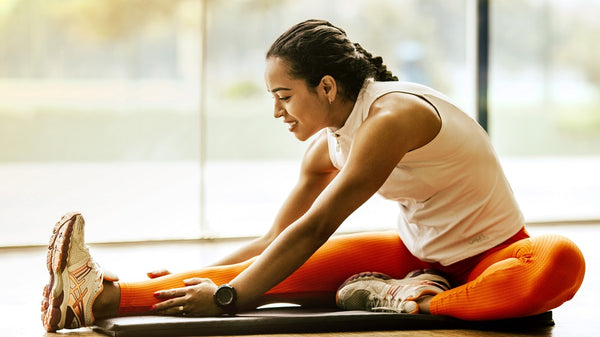
Post-cycling stretches play a crucial role in a cyclist's recovery process. They help in reducing muscle stiffness and soreness, promoting faster recovery and preparing the body for the next ride.
- Key Recovery Tool: Emphasizing the importance of "stretches after cycling" for muscle relaxation and recovery.
- Alleviating Stiffness: These stretches help in easing out the tension accumulated during cycling, enhancing overall muscle health.
For more comprehensive tips on ensuring comfort and preventing soreness after cycling, explore our Comfort Tips for Riders.
8. Tailoring Stretches for Every Cyclist's Routine
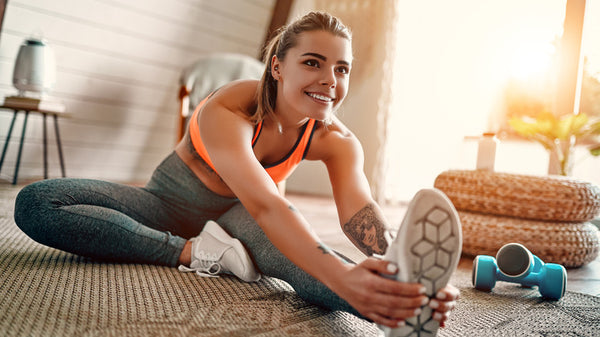
Every cyclist has unique needs and challenges, and tailoring your stretching routine to fit these individual requirements is key. This section focuses on how to personalize stretches for cycling, ensuring they are most effective for your specific cycling style and physical condition.
- Understand your body’s needs: Identify areas that require more attention based on your cycling routine.
- Adjust stretches to your level: Modify stretches to match your flexibility and strength.
- Incorporate variety: Vary your routine to address different muscle groups effectively.
Tailoring your stretching routine ensures you get the most out of your cycling experience, keeping you flexible, strong, and injury-free.
9. Advanced Stretching Techniques for Serious Cyclists
For the serious cyclist looking to elevate their performance, advanced stretching techniques can offer significant benefits. Here are five specialized stretches, each designed to target key areas for enhanced cycling prowess:
- Hip Flexor and Psoas Stretch: Targeting the deep hip flexor muscles, crucial for maintaining a fluid pedaling motion.
- Deep Glute Stretch: Focusing on the gluteal muscles, which play a vital role in cycling power and stability.
- Spinal Decompression Stretch: Aimed at elongating the spine, beneficial for posture and comfort during long rides.
- Advanced Shoulder Opener: Essential for upper body flexibility, maintaining a relaxed and efficient upper body posture.
- Hamstring and Calf Integrated Stretch: Combining hamstring and calf stretching to enhance lower leg flexibility, important for efficient pedal strokes.
Incorporating these advanced stretches can greatly contribute to improving overall cycling performance and reducing the risk of injury.
10. Wrapping Up: The Impact of Stretching on Cycling Success
Regular stretching routines hold the key to multiple positive impacts for cyclists:
- Enhanced Recovery and Performance: Regular stretching aids in faster recovery, allowing cyclists to maintain a consistent training schedule without overstraining.
- Increased Flexibility and Range of Motion: Improved flexibility contributes to more efficient pedal strokes, leading to better performance.
- Injury Prevention: Consistent stretching minimizes the risk of common cycling-related injuries, ensuring a smoother, safer cycling experience.
The right balance of stretching routines can profoundly influence a cyclist's journey, making it an indispensable part of their regimen. Discover more on maintaining back health in cycling in our article on Relieving Back Pain on Mountain Bike.



